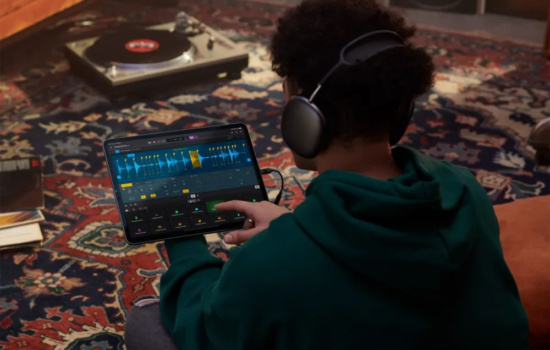Music has always had an uneasy relationship with business.
Any art, when mixed with commerce, comes to conflict. But there’s an industry that has given music more problems — and more opportunity — than business ever did.
It’s no secret that technology has completely upended the music industry. A few decades ago, the idea of hundreds of millions of people streaming music from their iPhones (for free!) was completely unthinkable. Yet that’s exactly where we stand today. And while the forces of change initially crushed the record labels, they’ve surged back over the past few years.
It looks like the labels have been learning from the technology industry. Startups have been testing out marketing strategies and using the results to accelerate their growth to incredible success. These startups have become so good at refining their marketing that startups like Slack can become billion-dollar businesses in 2 years. Now, artists can learn from and apply these strategies. The major labels already have.
In fact, the major labels are acting more like startup investors than ever before. They have begun using quantifiable data to measure an artist’s potential success, before signing. Label agreements require artists to pay back their investment when they start making money. Hell, the labels actually invest in startups! The majors have bought up stakes in all the hot music technology companies of the day, including Spotify and Soundcloud.
The reason record labels want to see quantifiable demand for your music, just like investors want to see strong user growth for a startup, because it works. If a company is going to put hundreds of thousands of dollars on the line, they want to make sure it’s a safe bet. Startups with numbers to back up their success raise hundreds of millions or even billions of dollars from investors; startups with no track record struggle.
Even if you have no interest in working with a label, you can use the mindset of a startup to improve your music and grow your audience faster than ever before.
Curious? Here’s how to pull it off.
“The number one reason that we pass on entrepreneurs we’d otherwise like to back is their focusing on product to the exclusion of everything else. Many entrepreneurs who build great products simply don’t have a good distribution strategy. Even worse is when they insist that they don’t need one, or call their no-distribution strategy a “viral marketing strategy”.
So says Marc Andreessen, one of the most well-known and successful investors in the world. He’s talking about startups, but the same concept applies perfectly to music.
Most artists don’t fail because they couldn’t write good music. No, most artists fail because they couldn’t get anyone to listen to it. And that’s why many successful startups use what’s often called the 50% rule — a recommendation to spend half of your time and resources on product and the other half on marketing.
As an artist, you should spend 50% of your time working on music, and 50% of your time working on marketing.
Why spend hundreds of hours slaving over your music, only to carelessly send out an email to a couple of blogs once you’re done? Don’t waste all your effort! When you’ve finished writing and recording, congratulations. You’re halfway there. Now, you have to get attention.
That’s all well and good — but it’s not easy to get attention. Tech startups know this all too well (how many photo sharing apps are there?). So we’ll swipe some lessons from their playbook and learn how exactly the best startups are planning and implementing their marketing strategies.
Most artists rely on the same few familiar strategies. Make a music video on YouTube. Email your Soundcloud track to a couple of blogs. Play a few local shows.
These are well-known strategies for good reason — they work. But the problem is that artists tend to think only of marketing strategies they are already familiar with. This means that way too many artists are hammering the same two or three ideas: everyone is hitting up blogs, playing local shows, and making YouTube videos.
It’s better to think of these strategies as baselines: they’re necessary, but probably not enough. You need to bring a little extra marketing savvy to surge ahead of the pack.
The key to finding good marketing ideas is contained in one concept and three steps.
The concept is that every artist is going to focus on the same tired strategies. If you can creatively find and test new ideas, you have a great shot at finding a strategy that works well and is non-competitive. This is gold.
So how do you actually come up with these creative ideas? I’m going to share a three-step process that will help you find new ideas, test them out, and then focus your efforts on the big winners (and cut out the losers). It’s loosely based on the ideas outlined in Traction, by Gabriel Weinberg and Justin Mares.
But first, keep in mind that not every marketing strategy is going to work. Before you uncover a dominating strategy, you’re likely going to suffer a few failures first. More importantly, you need to focus on the ideas that bring you the greatest return. Anything that brings you mediocre or no results should be cut from your strategy so that you can focus all of your efforts into the winners.
You simply don’t have enough time in the day to chase after middling marketing strategies. The three-step process below will help you do this.
The goal is to come up with every possible way to market your music, no matter how random, wild, or crazy. Have a discussion with your bandmates or other musicians, or brainstorm on your own with a piece of paper. Go on a run to come up with ideas, or use mind mapping software. Whatever works for you!
Once you’re sure you’ve done a workmanlike job of coming up with ideas, it’s time to return to your list. Not every idea you came up with is even remotely possible to pull off. Filter down to the most promising 15-20 strategies, focusing on ideas that you could reasonably apply to your music in the coming months. With this list in hand, you’re ready for the next step:
Look at your list of brainstormed ideas and identify your top 3 ideas. These are going to become your first tests. Then, identify your next three best ideas. These will be your fallbacks; if one of the first ideas ends up sucking, you can quickly swap it out. It’s important that you limit to only three ideas, or else you’ll have too much to test all at once. Start with three, and you can always work through the rest of your ideas over time.
Finally, it’s time to actually test these strategies out! The goal is to choose one marketing strategy and push it as hard as you can, watching carefully for the results. A great way to do this is by releasing singles, and using a different marketing strategy for each one. It’s important that you only use one strategy per test — you need to know exactly why something was successful or not.
If you’re using multiple strategies all at once, then it’s impossible to know which one is responsible for your success! The entire point of testing is to find out what strategies are most effective, and what strategies suck. If a strategy works, double down your efforts. If it sucks, cut it and choose your next idea to test. After a couple of cycles, you will have a handful of marketing strategies that you know can get you results, and a couple that you know will not.
I know it can seem like a lot of effort to go through testing out all of your ideas. But it’s really important because you need to focus on the strategies that will drive real results. There’s no point in throwing the whole kitchen sink at every track you release. You’ll have no idea what’s working, and what’s not. Most of the time, this translates to spending way too much time on strategies that are ineffective, and not nearly enough time on the really killer ideas that are driving your success.
Imagine if you knew exactly what was going to get you results, and you focused 100% of your marketing efforts on that idea. How successful do you think you’d be?
This process is meant to help you come up with brilliant ideas to grow your fanbase, test for the most successful, and then focus all of your efforts on getting results.
Find Part 2 of this article here: How to Grow Your Fanbase Like a Startup (Part 2 of 2)


























